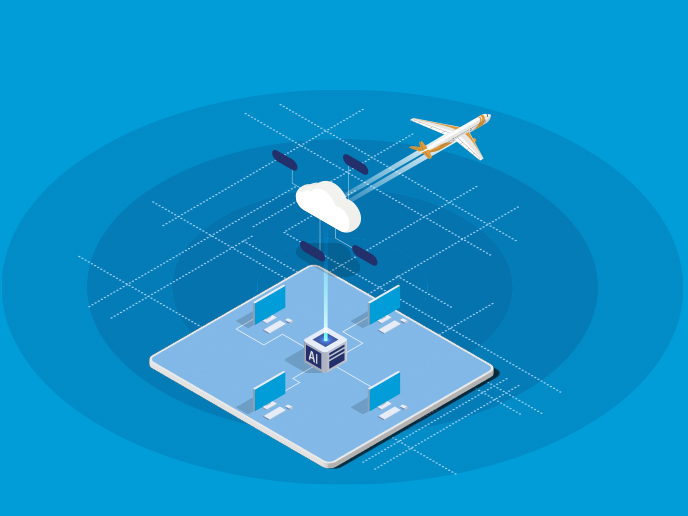III - Blue skies ahead thanks to cloud computing
“By modifying aircraft manoeuvres, it is possible to avoid emission-sensitive regions and significantly decrease non-CO2 effects.”
Manuel Soler, E-CONTRAIL project coordinator
The climate impacts of aircraft emissions such as CO2 are well-documented. Recent research has also highlighted other potentially negative effects, including the creation of persistent contrails, and human-made cirrus, or ice clouds, in the atmosphere. “Recent estimates suggest that non-CO2 emissions, particularly nitrogen oxide and cirrus contrails, can contribute two thirds of the global radiative forcing from aviation, making them twice as harmful as CO2 emissions,” explains Manuel Soler, director of the PhD in Aerospace Engineering programme at the University Carlos III of Madrid and coordinator of the E-CONTRAIL project. The effects of contrails on climate change are not yet fully understood. The variables involved are linked to medium to high uncertainties, and in-depth research has been limited. In the E-CONTRAIL project, funded through the SESAR JU, researchers will use artificial intelligence and state-of-the-art satellite imagery to carry out a comprehensive investigation on contrails and aviation-induced cloudiness, and measure their environmental impact. “The possibility of using artificial intelligence can help us examine the geographical location of the aircraft, its altitude and the time of the flight to understand the climate impact of non-CO2 emissions and, therefore, develop mitigation strategies,” says Soler.
Reducing climate impact
E-CONTRAIL is developing new artificial neural networks, which will take advantage of remote sensing technology and satellite data that identifies and categorises clouds. By synchronising air traffic information with these technologies, the team will be able to differentiate contrails and aviation-induced clouds from natural ones. The team expects to obtain contrail detection accuracies greater than 90 %, significantly reducing the current uncertainties in research regarding the non-CO2 aviation-induced impacts on the climate. In the longer term, the project will provide information tailored to aviation stakeholders’ needs to support them in moving towards a climate-neutral air traffic management system. “By modifying aircraft manoeuvres such as departure time, altitude, lateral trajectory, and speed profile, it is possible to avoid emission-sensitive regions and significantly decrease non-CO2 effects,” notes Soler. He adds that the related FlyATM4E project, also funded through the SESAR JU, has shown this approach could reduce climate.
Keywords
aviation, SESAR JU, sustainability, carbon neutrality, air traffic management, ATM, Green Deal, environmental impact, Horizon Europe, Digital European Sky, emissions, reduction



